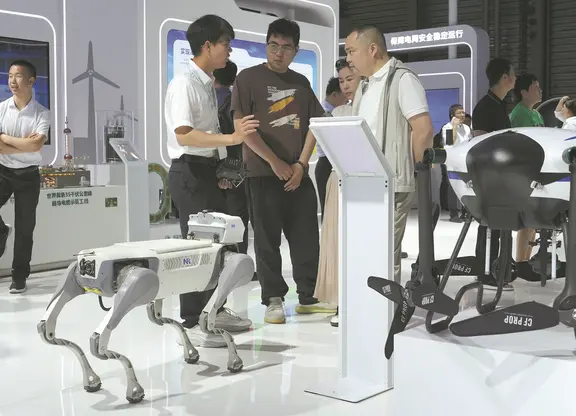By APD Writer Lu Jiafei
Washington, Sept. 8 (APD) -- Since Donald Trump sees the Korean Peninsula nuclear issue as the top national security priority for the United States, and with tensions on the peninsula continue to rise, you would like to think that there is a consistent U.S. strategy on the issue.
It turns out that there are probably two strategies in direct contradiction to each other.
The image of DPRK's nuclear test.
The first strategy, a relatively sensible one, was unveiled in April when U.S. Secretary of State Rex Tillerson, Defense Secretary Mattis and National Intelligence Director Dan Coats released a joint statement in which they announced that the Trump administration aimed to use economic sanctions and diplomatic measures to pressure the Democratic People’s Republic of Korea (DPRK) to dismantle its nuclear and missile programs.
The statement also said that the United States remained "open to negotiations" toward peaceful denuclearization of the Korean Peninsula while staying "prepared to defend ourselves and our allies."
The strategy was later dubbed “peaceful pressure campaign” by U.S. State Department, but the gist remained the same: diplomacy goes first.
As the strategy was starting to pick up steam with top U.S. officials seeking cooperation from other countries around the world, Trump threw it a curve and issued his now famously known warning of “fire and fury” against the DPRK.
“(The DPRK) best not make any more threats to the United States. They will be met with fire and fury like the world has never seen,” said Trump in early August in what was later revealed as an improvised move.
The explicit military threat from Trump was a far cry from even his own Pentagon chief Mattis who repeatedly warned that any war on the Korean Peninsula would be “tragic on an unbelievable scale.”
Amid widespread criticism of his yelling and chest-thumping rhetoric on the DPRK nuclear issue, Trump immediately doubled downed on “fire and fury” threat, claiming that his incendiary comments were “not tough enough.”
In recent flurry of tweeting activities, Trump also floated the idea that the United States would cut off all trade with countries that do any business with the DPRK, a proposal verged on being an object of ridicule, and he also proclaimed that “talking is not the answer” when it comes to the DPRK nuclear issue.
Trump’s latest outburst of hardline rant came on Sept. 3 when the DPRK declared that it had successfully detonated a hydrogen bomb that can be carried by an intercontinental ballistic missile.
“South Korea is finding, as I have told them, that their talk of appeasement with North Korea (DPRK) will not work, they only understand one thing!”
Trump tweeted.
Though he didn't specify what the “one thing” was, he had suggested in the past that shows of military power are necessary to halt the country's progress toward obtaining nuclear weapons capable of striking U.S. territory.
Trump’s rhetoric in the past weeks by no ways means that he is determined to launch military action against the DPRK. Such a move would inevitably lead to retaliatory attacks from the DPRK towards South Korea, where lives of millions of civilians would be put in great danger.
Yet, it gives the world a glimpse into the personal strategy of a president whose list of virtues never includes patience and who sadly view diplomacy with disdain.
Trump’s disproportional reliance to shows of U.S. military power on the DPRK nuclear issue was again put on full display on Thursday during his joint press conference with visiting Kuwaiti emir.
While he said that nothing, which of course includes military action against the DPRK, is inevitable, Trump spent the bulk of his answer on a DPRK-related question reminding Pyongyang of U.S. military power which “has never been stronger.”
“It’s been tens of billions of dollars more in investment (in U.S. military).
And each day new equipment is delivered -- new and beautiful equipment, the best in the world, the best anywhere in the world, by far,” said Trump.
After a closed door briefing on the DPRK issue by top Trump administration officials on Wednesday, U.S. lawmakers emerged with somewhat relief that those top officials used a more measured tone than Trump.
“I did not hear bluster in that room. I did not hear the word the ‘fire’; I did not hear the word ‘fury’,” said one Democrat.
The problem is that, just as top officials working for Trump are talking about a diplomacy-first strategy, their boss is clearly rejecting the idea.
And that gaping discrepancy leaves the entire world scratch their head in dismay.
Lu Jiafei, fellow of APD Institute. After spending one year in Palestine covering the Israeli-Palestinian conflict between 2013 and 2014, Lu moved to Washington, D.C. and covered the 2016 U.S. presidential election till the very end of Donald Trump’s upset victory. He is a political contributor to APD.
(ASIA PACIFIC DAILY)
 简体中文
简体中文





